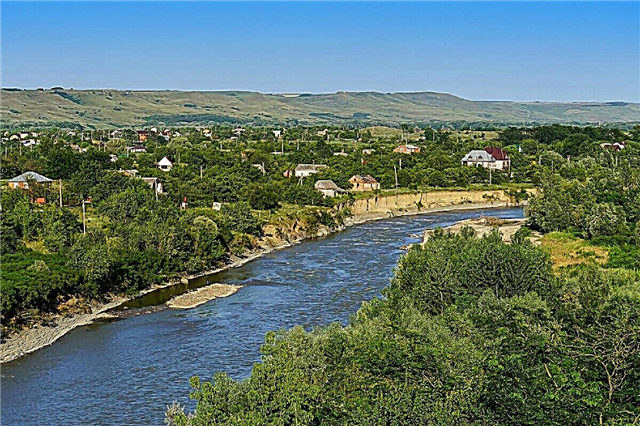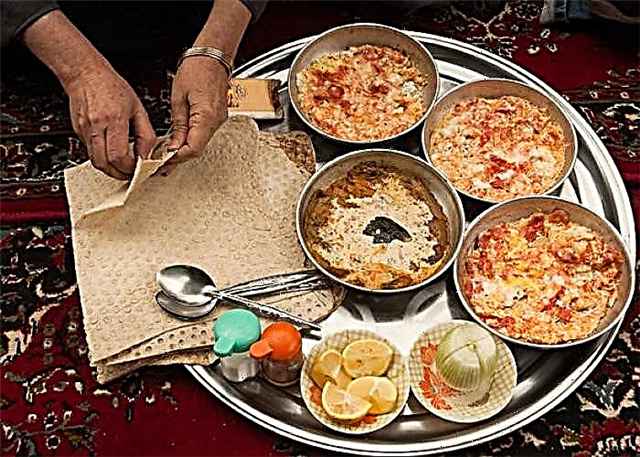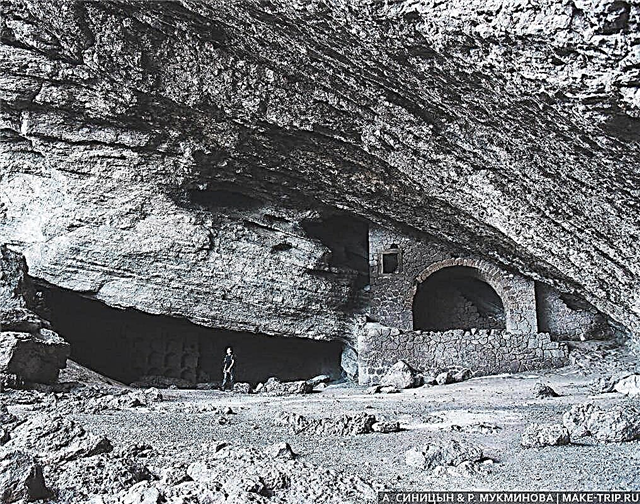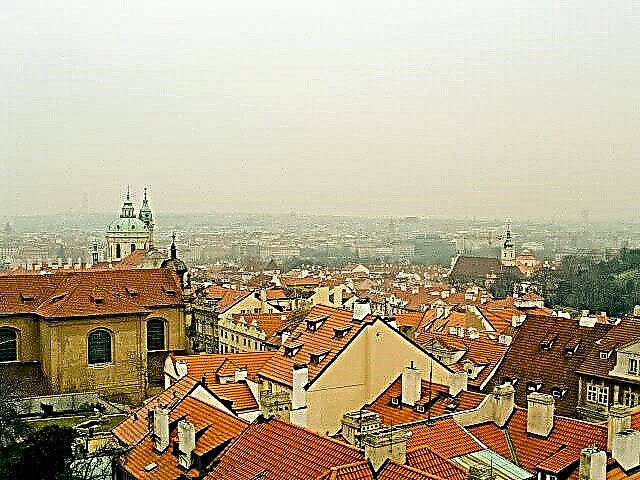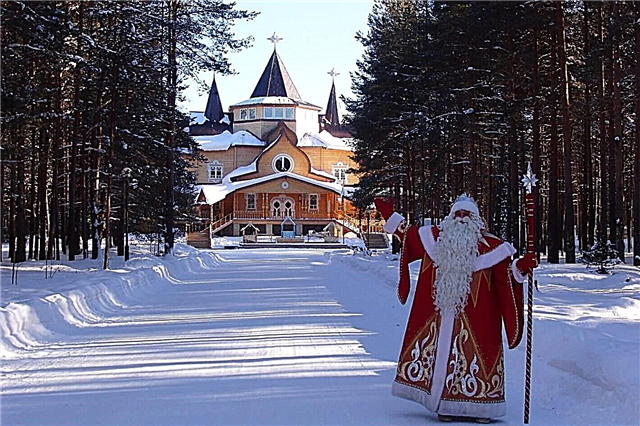Many tourists begin their acquaintance with the Vologda region from the capital of the region, which is not surprising, or from Veliky Ustyug. The latter can offer travelers not only a bright program associated with Santa Claus, but also the architectural beauty of the Cathedral Courtyard. Vologda itself opens for guests the doors of museums of various subjects, where a special place is occupied by the Lace Museum - the visiting card of the region.
The area is also scattered with monasteries and natural sites, which are difficult to pass by. Darwin reserve, Padun waterfall, iconostasis of the Trinity-Gledensky monastery - each attraction is worth the time lost on the road. Those who like to plunge headlong into the past will love a visit to one of the old estates or to the Old Russian settlement of Sugorye.
The most interesting and beautiful places in the region
List, photos with names and descriptions of the sights of the Vologda region!
Fiefdom of Santa Claus
Opened in 1999. The residence is located in Veliky Ustyug on the territory of a pine forest. In addition to the fairy-tale character, whom you can meet during the excursion, guests are invited to visit the smithy, the glacier - the place where Santa Claus lives in the summer, the winter garden and other remarkable objects. The owner himself lives in a two-story Russian tower, where there are many wonders and themed rooms.

Kirillo-Belozersky Monastery
Male. Founded in 1397. Stands on the shore of Siverskoye Lake. The monastery played a role in the struggle between the principalities, and was also a place for the storage of manuscripts. They, along with the icons after the revolution, ended up in museums. Since 1924, the monastery itself became a museum, which made it possible to avoid complete ruin. At the end of the 90s, the ROC was returned. The architectural complex is well preserved, including the iconostasis of the main church.

Vologda Kremlin
The year of foundation is 1567. The initial function is defensive. One of the dug ditches is now a river; others have been partially preserved. The complex includes: St. Sophia Cathedral, Bishops' Court - often mistaken for the Kremlin, a bell tower, a church that was once a palace temple. There are also lost objects, such as shopping malls, of which only the foundation remains.

Ferapontov Belozersky Monastery
Founded in 1398. Located in the Kirillovsky district. It is a museum and courtyard of the Vologda Metropolitanate. The architectural ensemble of the former monastery is a mixture of styles, since the construction was carried out in different centuries. It includes: churches, a bell tower, walls with towers. Frescoes and wall paintings have survived. Shrines are the relics of the saints. An important exhibit is the Siversky idol, the exact age of which could not be established.

Cartridges in Totma
They represent an unusual type of ornament, characteristic of the Baroque. They are inscribed on city churches and dated to the 18th century. They can look different: in the form of an open scroll, a shield. Internal fields - crosses, stars, flowers, etc. They are mainly present on the external walls, protruding by a third of the brick. Their appearance is associated with borrowings from the culture of other countries, since local merchants often traveled abroad.

Belozersk Kremlin
It appeared in the 15th century. Served as a defensive structure. In many ways, it is not considered lost due to the good preservation of the earthen rampart. In place of the former towers, extensions in the ground are visible. There were 8 of them in total. Archaeological excavations were carried out. Found rarities were added to nearby museums. The Transfiguration Cathedral is the best preserved part of the architectural complex.

Cathedral courtyard
Temple complex. Founded in the 17th century. Located in Veliky Ustyug. The main temple is the Assumption Cathedral. Its distinctive features are a seven-tiered iconostasis, frescoes and stone carvings. Nearby is the bell tower of an unusual structure - the two towers seem to be connected together. The Cathedral of Procopius the Righteous is known for its myrrh-streaming icon, as well as a fresco on the outer wall of the temple. There are other interesting buildings as well.

Trinity-Gledensky monastery
It has been mentioned since the 16th century. Located next to Veliky Ustyug. Inactive, it belongs to the territory of the Veliky Ustyug Museum-Reserve. The monastery's iconostasis was created over the course of 8 years. It is gilded with carvings of various types and styles. The icons are bright, painted by local craftsmen. When creating them, the authors moved away from the usual canons, the scenes depicted are more like social life. Decorated with wooden sculptures.

Semyonkovo Architectural and Ethnographic Museum
Founded in 1979. Located in the village of Semyonkovo. The area is over 12 hectares. There are about 20 buildings on the territory: houses, a glacier, barns, a bathhouse, a chapel and others. There are both original houses and remakes. The exposition tells about the life of local residents. Exhibitions are replenished and replace each other. There are subsections: Museum of Oil, Museum of Boots, etc. Nearby there is a forest, swamp, meadow - they are also part of the complex.

Padun waterfall
Located near the village of Sperovo. Height - 1.5 m. Wide, year-round. The water falls with a noise, hence the name. There is a 3.5 m depression under the waterfall. The inhabitants of this natural bowl are grayling. In the water of the mountain river, on which the waterfall is located, you can find the remains of shellfish - traces of a coral reef that existed here millions of years ago.

Recommended: 30 interesting natural monuments of the Vologda region.
Lace Museum in Vologda
Opened in 2010. Occupies the building of the former State Bank, which is an architectural monument of the 18th century. The halls are divided into separate expositions and tell about lace, both technique and styles, from different periods and different countries. On the ground floor, there are pavilions that host temporary exhibitions. There is a cafe, a workshop, a souvenir shop, you can buy products from local craftsmen.

The Bryanchaninovs' estate
Built at the beginning of the 19th century. Located in Pokrovsky. The style is early classicism, but with some differences from the canons. Bishop Ignatius grew up here. On the territory of the estate, in addition to the main house, there are: a church, a necropolis, a garden with ponds, a stable, a cellar. There are attached galleries and outbuildings. The local park is an example of landscape art. They try to keep it in its original form, based on the existing records.

Estate Khvalevskoe
Built in the middle of the 19th century. Located in the village of Borisovo-Sudskoe. The park extends over 40 hectares. After the revolution, a school was opened here. In modern times, the Kachalovs, who originally owned these lands, returned the property of their family. They restored the estate, ennobled the territory and made it a local cultural center. Events and official meetings are held here.

The Batiushkovs' estate
Built at the beginning of the 19th century. Located in the village of Danilovskoye. The one-storey building with superstructures has been preserved in its original form. Of the 14 alleys of the park, only 6 remain. The area is connected with Kuprin, and it is given a place in the museum's exposition along with the history of the building and biographies of the previous owners. The halls are divided into zones according to periods and historical information about important landmarks of the estate.

Gallic manor
The museum was opened in 1989. Located in Cherepovets. The exposition tells the story of noble families who lived here or nearby. The collection includes both the personal belongings of the owners and the collected rarities of past centuries. The furnishings have remained largely unchanged. Nearby - the house-museum of peasant life. There are interactive excursions and master classes.

National Park "Russian North"
Founded in 1992. The area is 1664 km². There are lakes, meadows, forests. In addition to natural beauty, there are many historical and cultural monuments on the territory.Tourists can come both for a cursory inspection and for a good rest: there are several tourist centers and children's camps, as well as hunting and fishing bases.

Darwin reserve
Founded in 1945. Partially located in the Cherepovets district, partly belongs to the Yaroslavl region. The area is over 112 thousand hectares. The composition includes not only land, but also coastal waters. The territory is classified as specially protected. The vegetation is mixed, coniferous forests prevail. Many plants and representatives of the animal world are listed in the Red Book. The peculiarity of the area is peat islands.

Spaso-Prilutsky Monastery
Male. Founded in 1371. As part of the village of the same name, it is included in the Vologda line. Possessed an extensive library, now lost. After the revolution it was a transit prison. After the revival, the monastery was twice visited by Alexy II. In the center of the architectural composition is the Spassky Cathedral. Shrines: relics, a rare staff of Dmitry Priutsky - the founder of the monastery, the icon "The Hearted One" and so on.

Resurrection Cathedral in Cherepovets
Built in the 50s of the 18th century. Almost nothing remained of the previous appearance, especially in the interior decoration. It was plundered and rebuilt in the early 90s of the last century. A parish school and an Orthodox library appeared. The iconostasis was gilded. A new building has been built in the courtyard, where the church shop is located. The relics of the cathedral are the relics of the Monks Athanasius and Theodosius.

Goritsky Resurrection Monastery
Female. Founded in 1544. The complex is based on three churches and outbuildings. The Resurrection Cathedral is the same age as the monastery. The Church of the Intercession and the Trinity Cathedral appeared closer to the middle of the 19th century. The main gates of the fortress walls overlook the banks of the Sheksna River. Part of the wall has collapsed and needs to be restored. For a long time it has its own water supply.

House-Museum of Peter I
Built in the 17th century. Located in Vologda. Peter I stayed here 5 times during his visits to the city and on his way. The interior decoration is partially preserved. The museum was opened in 1872. The oldest in the city. Includes an exhibition of approximately 100 items. More is not required due to the modest area of the house. Exhibits: personal belongings of the emperor, his death mask, Menshikov's cup, furniture of those years, etc.

Museum "Vologda Link"
Located in Vologda. Opened in 2006. The exposition occupies both floors of a wooden house built in the last century. Mini-exhibitions tell about the tradition of exiling the unwanted to the region, which began since the time of Vasily II. At different times, revolutionaries, potential rioters and even former members of the Soviet leadership, for example, Vyacheslav Molotov, were sent here.

Museum of the Metallurgical Industry
Located in Cherepovets. It was opened in two stages - in 2015 and 2016, respectively. The Severstal plant wanted to immortalize the history of metallurgy, with the help of production veterans. The exhibition tells about achievements, problems and plans for the future. One of the most modern expositions is “Metalotorium”: the participants of the excursion, wearing 3D glasses, can examine the virtual model of the plant in detail.

Museum "Submarine B-440"
Opened in 2005. Located in Vytegra. Five admirals came out of this area, perhaps that is why they decided to open such an unusual museum here. The boat is completely refurbished and available for visiting. The excursion includes acquaintance with the exhibition "Navigation Lights" - a collection of ship lanterns. Some of the equipment was left intact to give an idea of the everyday life of submariners.

House of the Zasetskikh
Built in the 90s of the 18th century. The oldest building in the city. One-storey with a mezzanine - a superstructure in the center and a portico - a covered gallery. Style - classicism. A distinctive feature is the symmetrical large windows around the perimeter of the facade. Belonged to a noble family. Previously, an impressive library for its time was kept here. The interior has retained some original details.

House-Museum of A.F. Mozhaisky
Opened in 1986. Located in the village of the same name. The exposition is dedicated to the domestic researcher in the field of aeronautics. The museum is located in a house that belonged to his wife. For some period of his life Mozhaisky worked here. The second part of the exhibition is dedicated to other people who have contributed to the development of the industry: aircraft designers, pilots. It also tells about important inventions in this area.

Assumption Nelazskaya Church
Built in 1694. Considering that it was built of wood, it was well preserved for its age. A highlight is the dark green roof and domes. The church has several tiers, the main part is much wider than the foundation due to the peculiarities of the architecture. Carved decor can be traced in the interior decoration, mainly near doorways. But the windows are small and have no cladding.

"Old Russian settlement Sugorye"
Located near Kirillov on the banks of the Sheksna. The atmosphere of the past has been recreated on the territory of the complex. There is a princely court with accompanying buildings. A boat cruises along the coast, created according to all the rules of shipbuilding of those years. There is a "House of Vikings", an exposition "From the Depths of Ages", folklore events are constantly held with the recreation of ceremonies and even battles.

Opoki tract
It is located near the village of the same name and on the Sukhona River. This is a geological fault, unique in its kind. The shores here rise up to 60 m. Between them there is a gap, very neat along the contour and also covered with dense vegetation. There are rapids, cliffs and streams. A nearby attraction is a natural fountain of artesian waters. The area is also famous for the fact that there was a gulag zone here.

Sizma village
It is located in the Sheksninsky district. It is known thanks to the Church of St. Nicholas the Wonderworker. Built in the second half of the 19th century. After the revolution, it was temporarily closed, then it began to be used as a warehouse, then as a village club. Returned to the Russian Orthodox Church. Active. The main value of the temple is a stone cross. A legend is connected with it: a heavy artifact sailed here against the current. A relic is a self-renewing icon.




